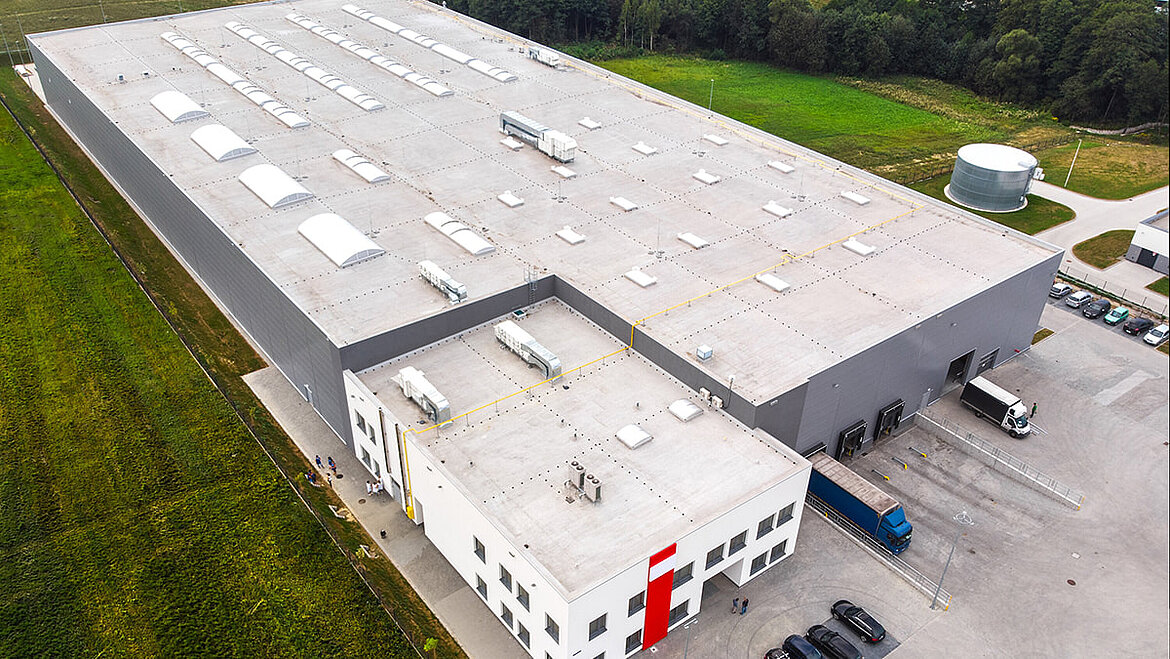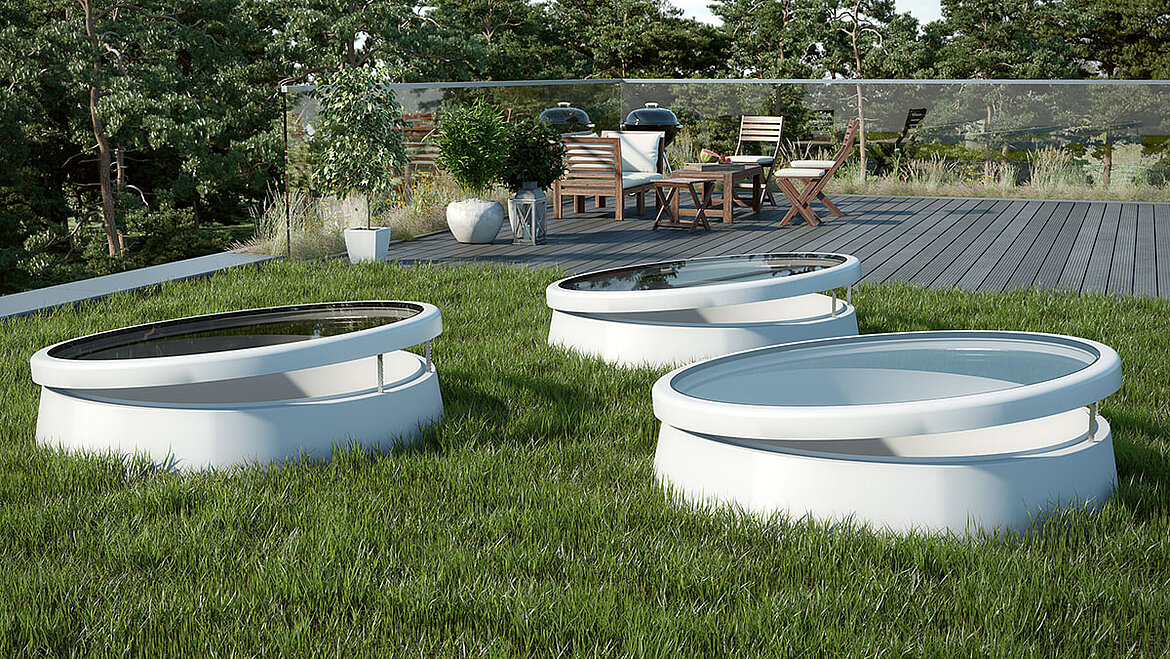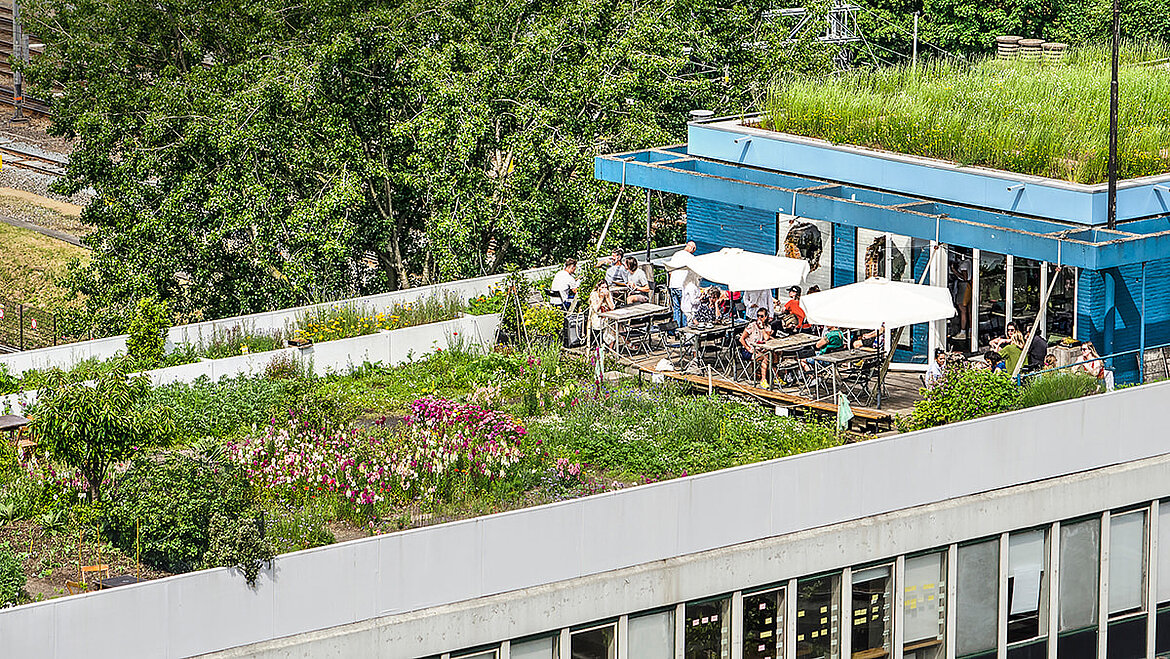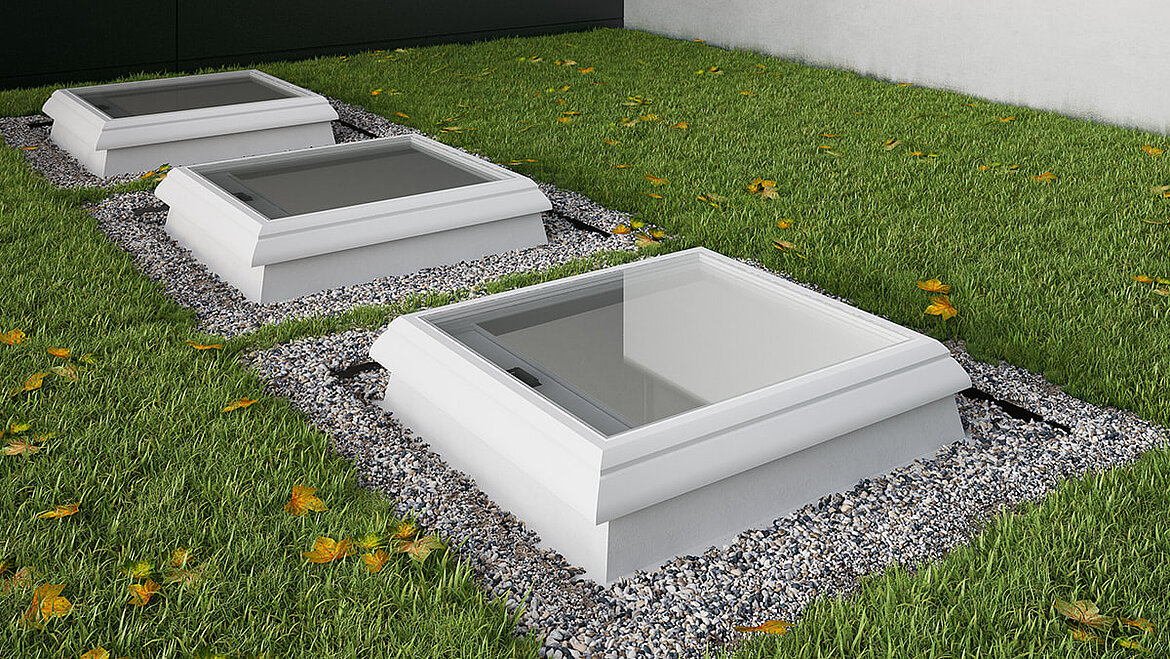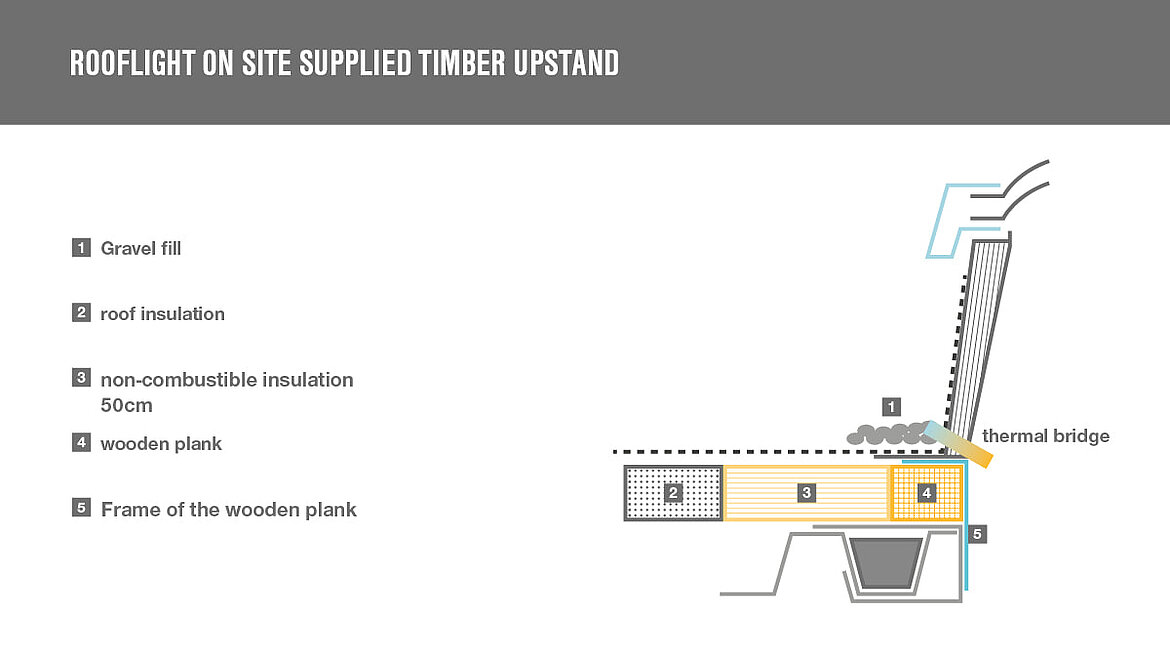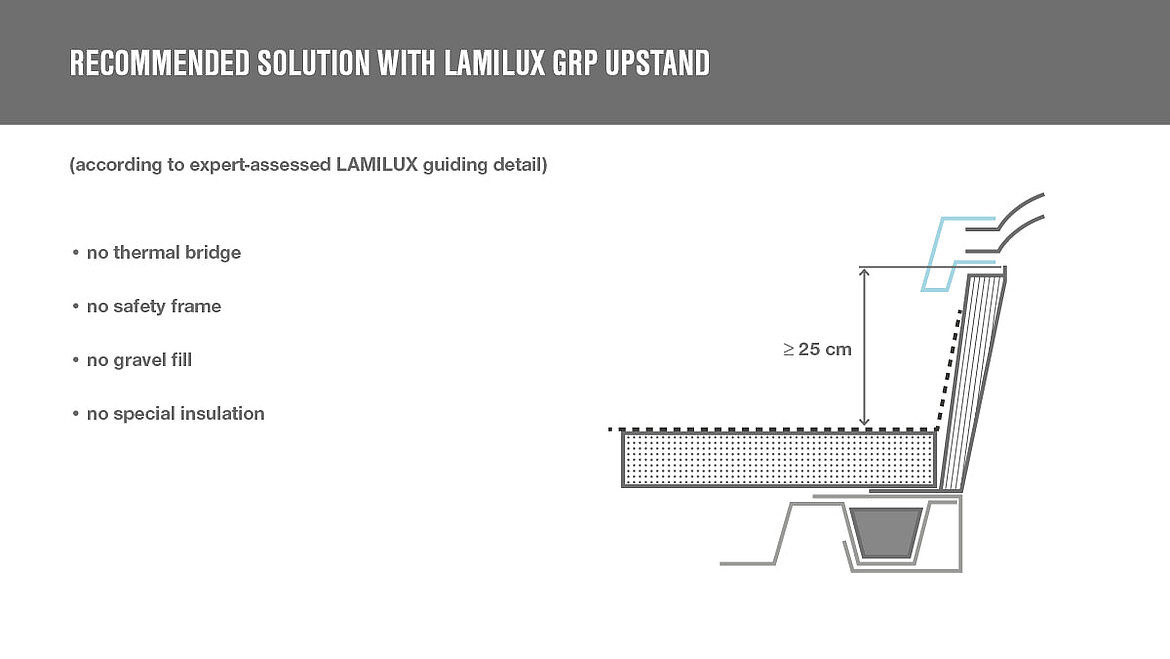What is important in flat roof renovation?
Tightness is probably one of the most decisive criteria for a flat roof. Since water and snow cannot drain off naturally as with a steep roof, but also inevitably remain on the roof surface for longer, the sealing must be intact without compromise. That is why flat roofs have a roof sealing and not a roof covering like the steep roof. If flat roofs are getting on in years or if the materials are poorly processed, leaks occur that can cause damage deep into the building. Renovation of the flat roof is then urgently necessary – whereby the choice of sealing sheets, for example, is of secondary importance. Because both bitumen, PVC sheets or FPO do their job if they are laid professionally. The decisive factor here is more the price. For example, a multi-layer bitumen sheet costs more than a single-layer PVC sheet.
Insulation of the flat roof also plays a major role in renovation. The old insulation layers are often damaged by water penetration or no longer meet the current standards of the Energy Performance of Buildings Directive (EnEV). According to the EnEV, all building components must comply with guideline values and energy efficiency criteria, or the components must be renewed and energetically renovated after prescribed periods. This results in many regulations, but in the long run it makes our buildings much more efficient, climate-friendly and sustainable. This is why it is also important to renovate a flat roof in accordance with the EnEV. There are also corresponding KfW subsidies that are worth taking advantage of. However, from 1 November 2020, the EnEV has been replaced by the Building Energy Act (GEG), which combines the Energy Saving Act (EnEG), the previous Energy Saving Ordinance (EnEV) and the previous Renewable Energies Heat Act (EEWärmeG) into one modern law.
What are the types and uses of flat roofs?
Where does the flat roof actually come from? Unlike in Europe, buildings with flat roofs have existed in America or Asia for several thousand years. However, in order to be successful here in Central Europe, the flat roof first had to adapt to the climate, weather events, seasonal extremes, building materials and building styles. During the Renaissance in the 14th and 15th centuries, castles with flat roofs were built in Italy and used as gardens – modelled on the ancient world. From the middle of the 19th century, during the Baroque period, this idea of gardens on flat roofs also moved into other parts of Central Europe. But with the new building forms of industrialisation, the flat roof was then built from reinforced concrete and with a lot of steel on large halls. The avant-garde architect Le Corbusier first brought the use of flat roofs as roof terraces back into fashion in the 20th century. Today, this is a common method of extending the living space of attics. In some places, prefabricated modules are even used to convert steep roofs into flat roofs.
Today, all flat roof types have in common that they may only be inclined by less than 5° to merit the designation flat roof.
Basically, flat roofs are divided into three different categories of use:
1. Unused flat roofs – for example on industrial halls or some high-rise buildings.
People are only on these roofs when they are carrying out maintenance, servicing or cleaning work. This is because air conditioning units, smoke and heat exhaust ventilation systems or skylights such as continuous rooflights and rooflight domes are usually installed on unused roof surfaces. Of course, appropriate safety standards must be met here, such as fall-through protection for skylights. There is even a special standard for the roof sealing for unused roofs, the DIN 18531.
2. Flat roofs in use – for example as roof terraces, parking decks or green areas.
As soon as people or vehicles move on flat roofs, it is no longer only impermeability, drainage and fall-through protection that are important, but also safe flooring, for example made of gravel, stone slabs or wooden planks. Of course, this also affects the insulation underneath, which must not give under the weight of the floor materials and traffic. In addition, for the roof structure of flat roofs in use – and accordingly also for the renovation – another factor is whether the rooms underneath are used as living spaces or as open parking decks, for example.
3. Green flat roofs – for example gardens.
Depending on the intensity of the greenery, a further distinction is made here between simple intensive greenery and intensive greenery, for which the layer structure is prescribed quite precisely in each case.
Types of buildings that are very often equipped with flat roofs include garages, multi-storey car parks, industrial and production halls, high-rise buildings and public buildings such as concert halls, theatres, administrative buildings and museums. Thanks to low-energy houses, a trend in private residential construction is also leading to flat roofs.
Partial areas of the flat roof renovation
Insulation of the flat roof
Any type of insulation, whether hard foam or soft insulation, is compatible with a flat roof. Depending on the type of use of the flat roof, personal attitude to sustainability, preferences of the company carrying out the work and the cost framework, a decision is made on the appropriate combination of materials. The thermal insulation values and isothermal values in particular must be taken into account in order to equip the flat roof appropriately for the building's use. Large-scale renovation therefore often makes more sense than repairing individual leaks or defective small spots. This way, the roof does not become a patchwork quilt where the same problems occur over and over again. Moreover, water does not always have to come out exactly where it enters. This means that if damaged areas are repaired in a piecemeal fashion, leaks may remain undetected.
Sealing of the flat roof
The sealing of the flat roof lies above the insulation. Basically, the question is whether bitumen or plastic should provide the sealing. Of course, this depends largely on how the roof surface is to be used. Bitumen has the advantage of remaining durable for a long time. However, several layers of bitumen sheeting are necessary. More economical, on the other hand, is sealing with PVC, i.e. composite sheeting, which is only laid in a single layer and thus saves material, working time and weight. There is also a liquid variant for this.
Drainage of the flat roof
Furthermore, the drainage on the flat roof must always be intact, as standing water will eventually cause damage even if the sealing is good. The roof pitch of less than 5° does not solve this problem by itself. If you are renovating the flat roof anyway, it is worth checking the drainage system carefully and optimising it if necessary. But how do you optimise the drainage of the flat roof? For example, by means of a gravity drainage system or a vacuum drainage system. These systems effectively channel water from the roof at several points through downpipes that are either internal and thus invisible or external, for example as emergency drainage.
Photovoltaics and solar energy on the flat roof
A renovation offers an excellent opportunity to provide electricity or thermal energy on the flat roof. Photovoltaic and solar thermal systems can be dimensioned for any type of building and use and easily retrofitted.
Daylight and ventilation on the flat roof
Flat roofs are predestined to bring daylight and fresh air into the rooms below. If skylights such as flat roof windows, rooflight domes, flat roof exits or continuous rooflights are already present, they should definitely be checked by a specialist during flat roof renovation. Are the skylights still tight? Is the glazing still intact or perhaps porous, yellowed or blind? Do the elements comply with the energy standards that are now being applied in the renovation? If this is not the case, the skylights can create weak spots on the roof that will undo all the positive results of the flat roof renovation. But when it comes to skylights: What is important in flat roof renovation? We devote a separate paragraph to this question.
Renovation of skylights on the flat roof
There are three initial situations when renovating skylights on the flat roof:
- There are not yet any skylights in place, but these are now to be retrofitted during the renovation. This case often occurs, for example, when an unused flat roof is converted into a roof terrace. A good way to get up onto the roof terrace are flat roof hatches. These then bring daylight and fresh air into the apartment below at the same time.
- There are already skylights whose upstands are still intact and which, even after renovation, still meet the corresponding requirements for insulation, prevention of fire spread and distance from the water channelling level. In this case, new upper parts are mounted on the skylights by means of renovation adapters, for example to create better thermal insulation, new glazing or overall energy optimisation.
- There are already skylights in place, but they need to be completely replaced. Reasons for this are, for example, the age of the elements, the materials previously used or a necessary height adjustment of the skylights due to now higher insulation.
If a skylight is completely rebuilt, as in the first or third initial situation, the roofer decides which type of upstand to use. This is crucial for the complete roof structure. This is because the industrial construction guideline DIN 18234 on structural fire protection on large-area roofs must be complied with. In an example, we show you the differences that result from the choice of the upstand.
Timber beam
When installing a skylight, timber beams are used to adjust the height to the installed insulation. In most cases, an elaborate interior cladding must be created in order to comply with all the necessary fire protection regulations. Naturally, there is also a thermal bridge between the timber beam and the insulation, which cannot be removed. This is due to the fact that this area is simply not insulated, which can be seen in the accompanying diagram.
The work steps for installing the timber beam substructure are:
- Additional material transport
- Cutting the timber beams to size
- Dowelling the first screed onto the existing substructure
- Screwing the other timber beams together
- Covering the timber beams
- Implementation of further fire-retardant measures in accordance with DIN 18234
The following diagram gives you an impression of which further fire-retardant measures are necessary to prevent fire spread on the flat roof according to DIN 18234:
The inside of the roof recess visible in the building must be clad in fireproof material, as the timber beam itself is combustible. Outside, an additional layer of gravel must be placed around the skylight. Underneath, 50 centimetres of fireproof insulation must be laid around the skylight. In this way, however, a thermal bridge is created between the insulation and the screed, which can lead to leakage and energy loss.
LAMILUX GRP upstand with or without thermally insulated base flange
These additional work steps as well as further structural measures to comply with DIN 18234 are not necessary if a GRP upstand from LAMILUX is installed. It is available with or without a thermally insulated base flange, and it easily achieves the necessary 25 centimetres above the water channelling level for smoke and heat exhaust ventilation devices (SHEV) and 15 centimetres for rooflight domes and flat roof windows. Neither gravel nor a separate insulation layer are then still necessary to comply with DIN 18234.
Why are no further additional measures necessary for LAMILUX GRP upstands to comply with DIN 18234? We have written a separate insights article on this: Fire protection as per DIN 18234. Here is a brief explanation: GRP, i.e. glass-fibre reinforced plastic, is a so-called warm material and is already installed below the insulation level in the LAMILUX upstands. This means that the thermal bridge described above is omitted. In addition, GRP has a different fire behaviour than PVC. This means that the additional measures can be omitted.
Conclusion: Flat roof renovation as an option for repair and optimisation
Renovating your flat roof is therefore not just a necessary evil, but also offers many opportunities to optimise building performance, energy management and daylight yield. It is important to pay attention to standards such as DIN18234 and to think big. This saves you from having more trouble after the renovation than before, for example due to leaks that remain undetected or problems with fire safety regulations. It is therefore also always worthwhile to work with specialist companies and renovation specialists who are ideally set up for renovation cases, both in terms of processing and product portfolio.


